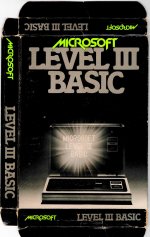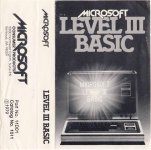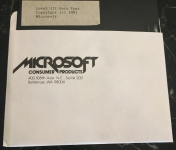Part 2: only to BASL3R and BASL3S. (I disassembled BASL3S mostly, but checked on results on both.)
"&" Double-precision functions
------------------------------
&SQR | &LOG | &EXP | &COS | &SIN | &LOG | &TAN | &ATN (exp1 [ , exp2] )
Used with a single parameter or expression such as &SQR(2), these return double-precision answers vs the usual single precision SQR(2).
The bad news is that the &ATN function is broken, and using two parameters breaks them all!
With &ATN(), if the parameter is between -1 and 1, it seems OK. &ATN(1)*4 has the correct digits of pi. But the ATN function can be used with values greater than 1, and if you compare params >1 between ATN() and &ATN(), the answers for &ATN() are
wildly different! That's a major bug.
I found this out by trying the "Savage" floating-point benchmark. With the line "B=&TAN(&ATN(&EXP(&LOG(&SQR(A*A)))))/A-1", it seemed tailor-made to test these functions. DTACK Grounded #25 Page 12
http://www.easy68k.com/paulrsm/dg/dg25.htm gives the program and various times, and issue #26 explains that results almost entirely depend on the ATN function. But when I got the worst error of all machines including single precision, that made me look at &ATN() closer. The other functions seem OK.
All the & functions also check for a "," and allow a second parameter. I have NO idea what that's intended for: it seems to put it into the second floating point register WRA2 and does other processing. But don't try it, because it gives nonsense answers on all these functions! &COS(1) is correct, but &COS(1,1) is... something else. Even worse, keep printing "?&COS(1,1)" repeatedly: you'll get
different answers every time for the same input! Any result of two parameters is completely wild & inconsistent.
Verdict on BASL3R and BASL3S: ambitious (like the rest of Disk Level 3), but clearly not "ready for prime time".
Other findings:
---------------
The disk they came in is bootable! It identifies itself as "TRSDOS VER 2.3A"
I haven't investigated any differences from plain 2.3. For all I know there's no change except the version number. At least it's not the infamous incompatible 2.3B.







